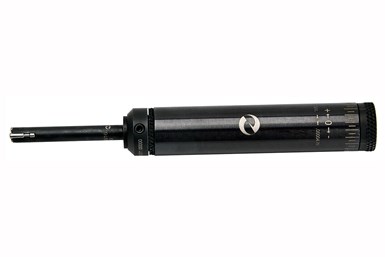Burnishing Tools for Machines With Limited Space
PMTS 2023: The body of the ID burnishing tools extend past the back of the tool block, enabling quick and easy adjustment as required.
Compact burnishing tools can achieve required surface finishes on a variety of different applications and materials in tight working spaces. Photo Credit: Monaghan Tooling Group
Monaghan Tooling Group says its compact burnishing tools are well suited for applications where a machine’s working envelope is limited with the tools, offering accurate sizing, low microfinishing and surface hardening of ID holes down to 4 mm. The company says this cost-effective, easy-to-use solution improves surface irregularities and tool marks, producing optimum surface finishes of 4-8 Ra in a single pass.
Manufactured by Elliott Tool Technologies, compact burnishing tools are a solution for achieving a required surface finish on a variety of different applications and materials in tight working spaces.
This compact burnishing is a solution for applications where the machine working envelope is limited — as found in many “Swiss-type” turning centers, small CNC turning centers and when burnishing parts in subspindles where the machine working envelope is reduced. With the tool body completely inside the tool block, the 5918 series compact burnishing tools feature an adjustment knob which protrudes from the rear of the tool shank, enabling the burnishing tool size to be adjusted for diameter without removal from the tool block.
Burnishing can accurately hold diameter tolerances in “tenths” (.0001") and produce microfinishes in the range of 2 to 8 Ra in most steels, stainless steel, aluminum and other ductile metals that have a hardness of under 45 Rc. This technique can eliminate secondary processes such as grinding, honing and polishing by automating those processes in the primary CNC machine, saving setup, processing time and labor costs, enhancing machinery utilization and shop floor productivity.
This line of compact burnishing tools can be applied to a wide range of industries such as medical, fuel systems, fluid power and small automotive components. Economical, long-lasting and replaceable wear parts reduce the total cost over the life of the tool. Wear parts are easy to replace, with common tooling available from stock.
Related Content
-
Making Micro Threads
Production of micro threads can be challenging, but using the most suitable tools for a given application can simplify the task.
-
German Project Yields Three New Medical Machining Processes
Recent research has resulted in a new mix of high-speed turn whirl milling, polygon turning and rotational turning for manufacturing medical bone screws and out-of-round nails.
-
What Is Trochoidal Turning? How Might Shops Benefit From It?
While trochoidal milling might be a more well-known toolpath strategy, trochoidal turning can offer similar benefits such as high material removal rates especially for rough-turning operations.













.png;maxWidth=300;quality=90)



